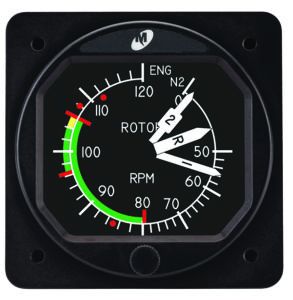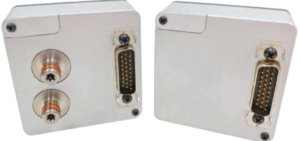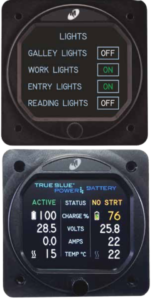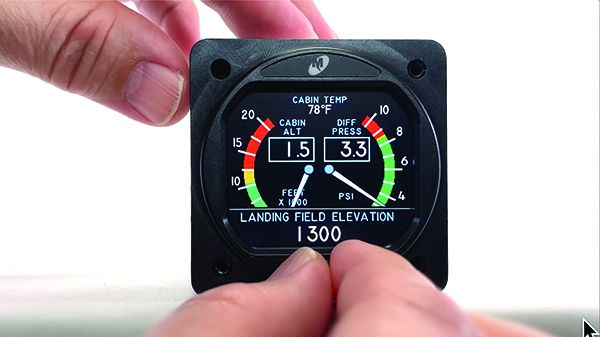The good thing about old airplanes is also the bad thing about old airplanes. Some airframes seem immortal, but the companies that built the instruments for them are anything but. Mid-Continent Instruments and Avionics sees market potential in that conundrum and its solution—like everything else—is driven by rapid advances in display and processing technology.
As we go to press this month, Mid-Continent—a long-established builder and fixer of instruments for everything flying—is out with a new line called the MD23 Flex. This gadget is capable of displaying anything and everything—from airspeed and vertical speed to cabin temperature in the galley. And if you want, it’ll do all of that on a single 2-inch instrument with a bright, daylight-readable LCD display.

How much? It’s complicated. The Flex is really a business-to-business product meant to be sold to third parties producing STC packages of various kinds for sale directly to the aircraft owner. That’s not to say an owner couldn’t buy directly from Mid-Continent, but that’s not envisioned as the core market. While there are certain to be piston applications for the Flex, the broad appeal is likely to be turboprops and up. Lots of older ones are still flying with instruments on the verge of extinction.
WHERE IT COMES FROM
Mid-Continent President Todd Winter says the Flex emerged from an accelerating trend of older airplanes being rendered almost uneconomic because of aging, unrepairable instruments. Glass upgrade packages—including systems aimed at the lower tier like Garmin’s GI 275—include engine and system instrumentation, but they’re not necessarily all-inclusive and not very customizable, Winter said.

“We’ve had customers come to us in desperation looking for ways to replace functionality or gauges they may have had in the instrument panel in the past that are no longer available or no longer economical to repair,” Winter says. In the past, Mid-Continent has performed miracles in fixing vintage gauges, but that era is coming to a close.
An LCD display is a natural to step into the breach and Winter told us that recent advances in both display and processing prowess—not to mention more streamlined certification—have made it practical to rapidly develop digital replacements for virtually any aged-out instrument.

That Mid-Continent can stuff all of this capability into a single, shallow 2-inch instrument illustrates how far things have come in just the last two or three years. On the list of stuff the Flex will do is altimetry, vertical speed, angle of attack, fuel management of all kinds (including consumption rate), flap and gear indication, tachometer, volts and amps, any engine parameter, air data and airspeed. This is the short menu that will be filled out by customers asking for new applications.
According to Winter, two key capabilities built into the Flex are data conversion and ARINC combining. Heretofore, discrete instrument replacements going into older aircraft required happy boxes to convert one data format to another. But the Flex does that on its own and can accept analog or ARINC 429 input.
Winter said because Mid-Continent sees robust possibilities in the turbine and jet market, the MD23 is certified to a high level under TSO C2d. It qualifies under RTCA’s DO-160G and 178C to design assurance level A, according to Mid-Continent’s specs.
THIRD PARTY
Mid-Continent’s Flex introduction in late February ignited some confusion about one thing: What will it cost? Mid-Continent steadfastly refused to say because it doesn’t really know yet. It’s trying to insert the Flex into a gap between what aftermarket glass provides and customer needs and wants unfulfilled by such upgrades. It’s betting on the come that if it provides the framework, third-party companies will figure out the STCs and marketing to make the instrument available to owners. Winter says there’s likely to be an OEM component, too.
Here’s an example: Let’s say there’s a market for torque and engine instrumentation in older King Airs. A company seeing that potential will approach Mid-Continent about a package to prep the Flex to do this kind of display. What Mid-Continent is really selling is the backroom engineering service to configure the Flex for the display task; the instrument itself serves as the means to put this data into the panel. Although the instrument is already certified, the specific aircraft applications will be up to the STC developers. And thus so will pricing, amortized over how many units the third party thinks it can sell.
While Mid-Continent expects demand based on its experience in dealing with customers trying to fix the unfixable, the ecosystem for these new STCs doesn’t exist yet. Mid-Continent doesn’t expect to do many STCs directly with operators itself, but it has one that offers a price signal. Mid-Continent is doing a brisk business in its True Blue lithium-ion battery systems and the company has developed a Flex-based monitor for those products.
“I went ahead and funded …the definitions that customize the indicator into a battery annunciator. You would need an STC for that and our indicator would be used in that system. In that case, I am pricing that indicator at $2500. I’m amortizing the application costs over what I expect to be hundreds of installations,” Winter said. He cautions against using that as a take-it-to-the-bank number, but it gives some sense of what vendors might charge. We suspect, as Winter says, OEMs will see opportunity here, and not just airframers.
Find out more about Flex on Mid-Continent’s website at www.mcico.com.





